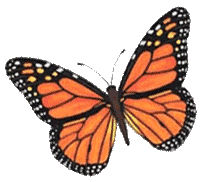Marline Squance
The environmental Determinant of Lupus Flares study (EDOLF) investigated the relationships between common environmental agents found indoors and self reported symptom flare days (SRF) in 101 Australian female lupus patients as compared to 41 age matched healthy controls. The study was retrospective and employed mixed methods examining differences in lifestyle behaviours and agent exposure with personal product use.
The study showed that the Australian population was similar to other Caucasian populations, with the average number of flares reported to be 29.9 SRF days, with 6.8 discrete flares for the study year. Flare symptoms were consistent with other population profiles published, however the EDOLF Australian population also reported gastrointestinal issues (13.9%) and shortness of breath (9.9%) as common symptoms. Commonly published flare triggers of UV radiation, infection and stress were confirmed, with the addition of new potential triggers: temperature & weather changes, work, and cleaning chemicals.
Use of personal care products, personal hygiene and lifestyle activities, resulted in significant increased risk associa-tions for bath oil (IRR 1.008, CI 1.00– 1.02) and significant reduced SRF risk for cleansing beauty products (IRR0.999, CI 0.998-0.999) and a combined makeup group (foundation and sunscreen) (OR 0.998: CI 0.997-1.0). A flare a day reduction of 0.15% was calculated for each day of combined makeup group product use. In comparison to control participants, the SLE group showed significant differ- ence in 25(OH)Ddeficiency (p=0.02) and 25 (OH)D levels (means-control 74nmol/L 29.5/ml); SLE 58nmol/L (23.1ng/ml), p=0.04. Reduced levels of 25 (OH)D were associated with expression of serological autoimmunity (ANA titres of 1:80) with odds ratios (OR) for ANA-positivity declining by 36% of the base- line OR for every two-fold rise in 25(OH)D and SRF. Significant associations were found for Finnish Job Exposure Matrix (FINJEM) occupational exposure classes; manual handling burden (p=0.02, IRR 1.01); iron (p=0.00, IRR 1.37); wood dust (p=0.00, IRR3.34); and asbestos (p=0.03, IRR 2.48), indicating that participating in occupations such as nursing, teaching and specialist labouring could pose an increased risk to SLE patients. Analysis of lifestyle factors indicates that the EDOLF SLE participants, as com- pared to the control participants, had reduced levels of QOL on VAS scales, lower levels of physical activity but similar dietary variables. SLE participants also used therapies such as acupuncture, hydrotherapy, massage and dietary sup- plements including vitamin D and anti-inflammatory homeopathic medications such as fish oils.
The retrospective design of the EDOLF study may have resulted in a number of study limitations including misclassification and recall bias; however a number of data validation steps were incorporated to limit bias influences on reported results. One considerable limitation of the retrospective EDOLF study design was that establishment of firm casual relationships was not possible. Therefore, reported results can only infer potential signif- icant relationships and health effects. In conclusion, the EDOLF study provides insight into SLE experience particularly perceived flare symptoms, triggers and management strategies.
Each year, the average SLE patient experiences 30 days of symptom flares which are commonly self-managed with no extra physician assistance. The study also identified that everyday environments and exposures in day-to-day life activities, including both home and work environments, could po- tentially trigger exacerbation of SLE symptoms. In addition, the use of UV protective products, whilst potentially reducing symptom exacerbation and flare days, may para- doxically influence serum 25(OH)D in a group of patients with a higher incidence of defi- ciency and insufficiency as compared to the general population. Importantly, the EDOLF study provides insight into the future research directions that will better inform appropriate protective measures that people living with SLE can adopt to reduce adverse health impacts and improve life potential and quality.
Bibliography:
- The lived experience of lupus flares: features, triggers and management in an Australian female cohort. International journal of Chronic Diseases. Marline Squance, Glenn EM Reeves, Howard Bridgman.
- Exploring lifetime occupational exposure and SLE flare: a patient focussed pilot study. Journal: Lupus, Science & Medicine. Marline Squance, Maya Guest, Glenn Reeves, John Attia, Howard Bridgman
- Vitamin D levels are associated with expression of SLE, but not flare. International Journal of Rheumatology. Marline Squance, Glenn Reeves, Huy Tran.
- Self-reported Lupus flare: associations with everyday home and personal product exposure. Toxicology reports. Marline Squance, Glenn Reeves, John Attia, Howard Bridgman, Maya Guest.
- Patient reported lupus flare: exploring associations with foundation makeup and sunscreen use. Journal of Cosmetics, Dermatological Sciences and Applications. Marline Squance, Glenn Reeves and John Attia
Thank you to ARRC newsletter for permission to publish this article from the Spring 2015 Vol. 177
